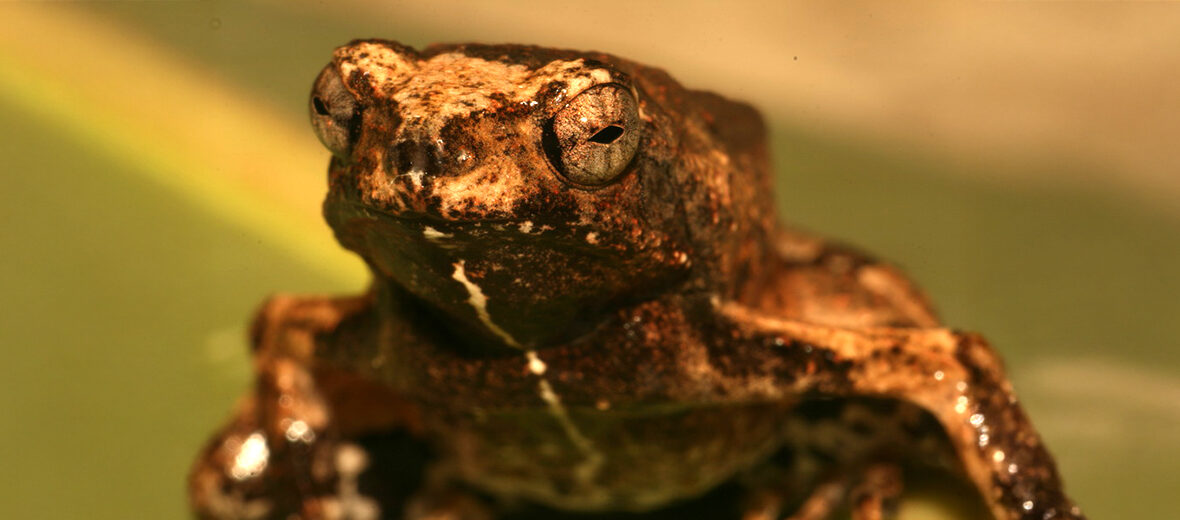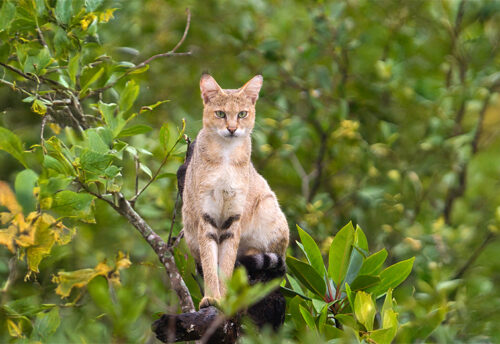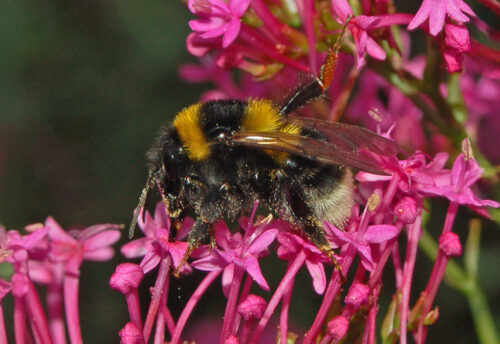
The Peters’ dwarf frog can be found in Amazonian Colombia, Ecuador, and Peru. Taxonomy and classification of these frogs is always changing due to the continual evolution of behavioral isolation and rapid speciation (the formation of new and distinct species in the course of evolution) in the region. These frogs are threatened by habitat loss and destruction at the hands of farming, ranching, and the logging industry (both legal and illegal). However, they are abundant enough to be listed as Least Concern by the IUCN. Their population trend is listed as stable.
First the Stats…
Scientific name: Engystomops petersi
Weight: Up to .11 ounce
Length: Up to 1.54 inches
Lifespan: Up to 7+ years
Now on to the Facts!
1.) These frogs are unique in that some females have concealed eardrums, aka tympani, and males have prominent tympani.
2.) Divergence of this species from their sister species Engystomops freibergi seems to have been driven by behavioral isolation in relation to the male’s call characteristics rather than geographic isolation.
3.) They prefer primary and secondary forests and forest edges.
4.) Peters’ frogs are terrestrial (spend their life on the ground) and are often found among leaf-litter.
5.) These critters are nocturnal (active at night).
But wait, there’s more on the Peters’ dwarf frog!
6.) During the mating season, males will sing and send mating calls all while floating on their backs in the water.
7.) They primarily feast on termites, but other insects are also taken.
Did you know…?
Females typically prefer local calls over foreign calls from males. They don’t often recognize calls of different frequencies. They also prefer the complex calls that include a suffix at the end compared to the simpler calls with a prefix and whine only.
8.) The larvae, aka tadpoles, are typically thought to be the largest in size of all known Engystomops larvae, and measure up to .89 inch.
9.) These frogs are threatened by invasive rainbow trout.
10.) The Ecuadorian forests have lost nearly 60% of their habitats due to deforestation! There have also been many legal and illegal mining and logging activities that cause further habitat loss. This habitat loss not only effects these frogs, but all other biodiversity in the region.
Be sure to share & comment below! Also, check out the Critter Science YouTube channel. Videos added regularly!

Want to suggest a critter for me to write about? Let me know here.
Some source material acquired from: Wikipedia & IUCN
Photo credit: DuSantos




Leave a Reply